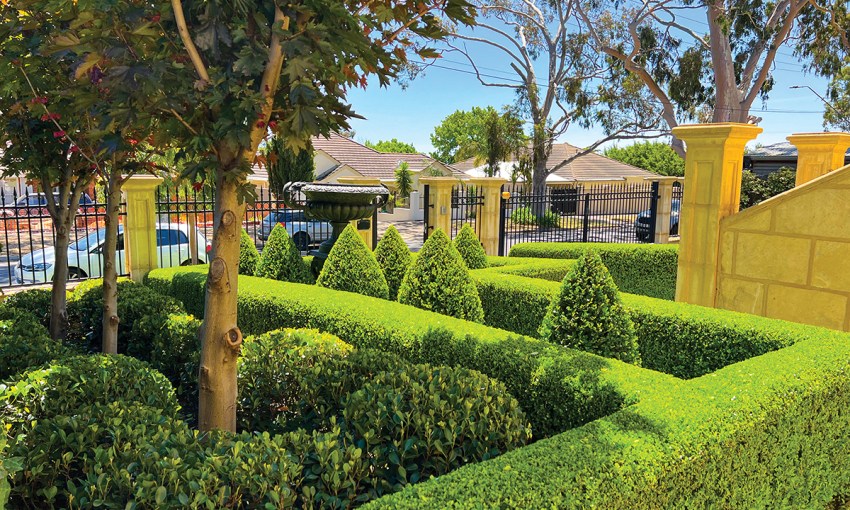Topiary might have been used in gardens for thousands of years since the days of the Roman Emperor Augustus, but these living sculptures remain as contemporary as ever.
Living works of art

What’s not to love about living sculptures? Those closely clipped, shaped perennials known as topiary, providing impact to a garden scape either through strategically placed accents or repetition.
The plants generally used for topiary specimens are those with dense foliage that have compact or columnar growth habits. Common plant species include buxus, juniper, bay laurel, olives and ficus, but lavenders, gardenias and some natives (lily pilly, teucrium and westringia particularly) make beautiful flowering specimens.
The two most commonly used species are English and Japanese buxus. In South Australia, we recommend keeping English topiary in pots and Japanese topiary in either pots or the ground because the latter thrives in our local soil conditions. You should purchase the largest pot possible for your topiary, which not only provides for future growth, but also allows in certain circumstances for under-planting with seasonal colour.
For the more experienced gardener, you can topiary your choice of plants, but this does represent many years of patient clipping awaiting the desired result. So, when determining topiary value at your garden centre, you need to appreciate you are purchasing years of time and effort for that instant impact in your garden.

Topiary can be shaped in cones, pyramids, bollards, spheres, spirals, standards as well as whimsical animals, hearts and hoops grown over wires. We have noticed recently an emerging trend of clouded topiary used in pots or as focal points in a garden which provide drama within the garden especially when up-lit at night.
The most common cloud varieties are Cyprus, juniper for larger specimens, with Japanese and English buxus for smaller specimens. Clouded topiary requires more regular clipping and can be clipped in either a traditional European style, ball shapes or the Japanese style which is more horizontally oval.
Topiary can be used in the garden to provide impact and accent points, and shaped into more complex designs such as an animal to provide a focal point in the garden, making it living garden art as opposed to bronze, stone or rusty art pieces. Another contemporary idea is to try three differently sized spheres set amongst a flowering garden bed for unexpected impact.
Topiary applications can be as simple as a pair of cones either side of a front door to provide the perfect entrance to your home, or they can be placed to frame a view, or be used in a line along a path leading to a garden bench, all key elements up-lit at night for dramatic effect.

Topiary can enhance steps with randomly placed balls to entice the visitor to proceed up and down, while screens of topiary provide not only a noise and privacy function, but also the structural backdrop to both formal and informal garden beds. It’s important to remember that topiary require at least six hours’ sunlight, so tucking them under a verandah, although beautiful, will lead to their eventual demise.
If topiary are placed in more shaded positions they must be turned 45 degrees every three months to prevent dieback and ensure even growth.
When it comes to looking after your plants, fertilising topiary should be undertaken using soluble fertiliser during the growing months – September to March – to complement an annual dose of slow-release fertiliser in spring.

Clipping your topiary should occur at least three times a year; autumn, early spring for major structural clipping and again just before Christmas. Always clip when there is overcast weather for a few days so that exposed foliage doesn’t burn in any bursts of extreme heat.
Clipping should be done by hand with very sharp, quality hedge shears or for smaller specimens use hand shears (similar to the old sheep shears). The English- and Japanese-made shears are the best and should be regularly sharpened to provide the optimal clipping results.
Watering of topiary must be regular, especially for those in pots. In the height of summer, you would be looking at a good soak every second day, while in winter, anything less than 10mm of rain is unlikely to be enough to sustain plants in your garden, including topiary, so it’s vital to supplement small rain bursts with your own regular deep watering.
Topiary plants are both rewarding to care for, and for relatively little effort, provide decades of viewing pleasure.



